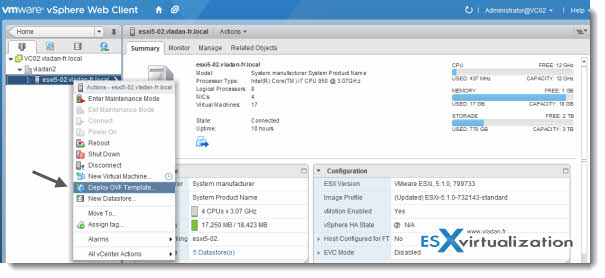

Now log in on one of your domain controllers, open the DNS console, select your DNS zone, right-click it and choose New Host (A or AAA). Since I mentioned VDP 6, this will also be the version I will use in this article, but the installation is the same for older versions. To give you an idea, here is a table for all the minimum CPU and memory allocation needed:īesides hardware and software requirements, there are some infrastructure prerequisites needed also, like DNS, user accounts, and time configuration (NTP). This resources can increase or decrease, depending on how much backup storage you provision on the virtual appliance. To deploy the latest version of VDP, which is version 6 at the time of this writing you need to have at least VMware vCenter 5.1 and a lot of CPU and RAM on your ESXi hosts or cluster. Some of the VDP (version 6) features are:Īnd many more can be found in the VMware vSphere Data Protection Overview document. And this is why you need to backup your virtual infrastructure, and VMware vSphere Data Protection (VDP) does just that and a little bit more. Well yeahh, if you are using it for a short period of time, before a patching or an application installation, that’s fine, but not for months or years. Using snapshots in a production environment just so you can reverse the machine in case something might go wrong is not recommended because of a performance issue.

This is not necessarily because of a host crash or any other hardware problem, but sometimes a “reverse in time” is needed someone messed up a database, or a guest VM is just not booting anymore or any other situations like this, and snapshots are not an option. Virtual machines need backups, the same as physical machines do. You might think that your machines are safe and that you have nothing to worry about once you virtualize your infrastructure, but that’s not true.


 0 kommentar(er)
0 kommentar(er)
